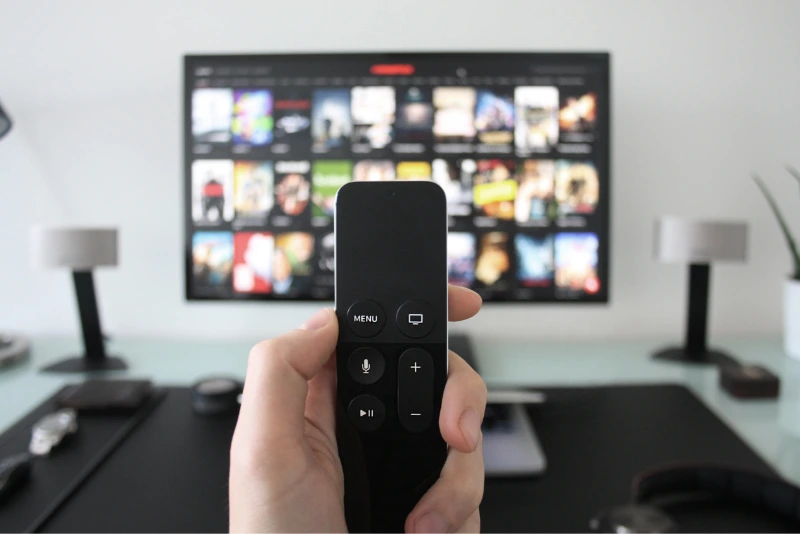Welcome to our comprehensive guide on how to make your TV-watching experience more enjoyable by learning how to easily turn off TV narration. While narration can be a valuable feature for visually impaired viewers, it can sometimes be a distraction for others, why you might want to turn it off, and the steps to disable it on major TV brands, including LG, Samsung, Sony, Vizio, Roku, and many more. We’ll also explore adjusting other accessibility settings and provide alternatives for visually impaired viewers, ensuring a harmonious viewing experience for all.
In this guide, we’ll cover everything you need to know about TV narration features.
What is TV Narration?
TV narration features, also called “audiodescription” or “video description,” provide an additional audio track that describes key visual details. This aids visually impaired viewers in following along with the video content.
Typically, a narrator talks through scene changes, facial expressions, on-screen text, and other important details that aren’t reflected in dialog. This narration plays during natural pauses and quiet moments.
Modern smart TVs allow viewers to toggle narration audio tracks on and off. Streaming services may offer narration for select programs as well.
Why Turn Narration Off?
For viewers that don’t require assisted narration, the added audio can be distracting and unnecessary. Here are some common reasons you may wish to turn TV narration off:
- Focus on dialog without disruption
- Avoid spoilers described before shown
- Prevent confusion for children following plots
- Reduce sensory overload from too much audio
- View content without narration distractions
Of course, balance this with the needs of any visually impaired viewers in your household. Find compromises like using headphones or watching content separately.
Steps to Turn Off Narration on Major TV Brands
The process to toggle narration depends on your TV model and remote. Here are guides for popular smart TV brands:
LG TVs
Press the Settings cog on the remote
Navigate to Accessibility > Audio Description
Switch Audio Description to Off
Samsung TVs
Press Menu button and select Settings
Choose General > Accessibility
Turn off Voice Guide by selecting Off
Sony TVs
Press Home button, then select Settings
Go to Display & Sound > Audio Description
Choose Audio Description and switch to Off
Vizio TVs
Press Menu, choose Accessibility
Select Audio Descriptions
Turn Off AD by selecting Disabled
Roku Devices
From Home screen, go to Settings
Choose Accessibility > Audio Guide
Toggle Audio Guide to Off
Apple TV
Go to Settings > General > Accessibility
Select Audio Descriptions
Turn off Audio Descriptions
Panasonic TVs
Press Menu, navigate to Setup
Choose Audio Description, then switch to Off
Toshiba TVs
Press Menu, go to Settings
Choose Accessibility, then Audio Description Off
Sharp TVs
Press Menu, navigate to Settings
Choose Accessibility, then switch Audio Description to Off
Hisense TVs
Press Settings on the remote
Navigate to All, then Accessibility
Turn off Audio Guidance
Philips TVs
Press Menu, go to Setup
Choose TV Settings > Accessibility
Turn off Audio Description
TCL TVs
Press Settings on the remote
Choose Accessibility > Audio Guide
Toggle Audio Guide to Off
Insignia TVs
Press Settings on the remote
Choose Accessibility > Voice Guide
Turn off Voice Guide
Off-Brand & Older TVs: For other TV brands, consult your owner’s manual for narration settings. Accessibility options may be under General, Display & Sound, or Advanced Settings. If your TV lacks settings to disable narration, you’ll need to mute audio during scenes with unwanted narration.
Adjusting Other Accessibility Settings
While disabling narration for general viewing, consider keeping captions enabled for your whole audience.
Most smart TVs allow you to customize caption text size, color, opacity, and more for clear comfortable reading. Review audio enhancement options like dialogue enhancement and balance controls as well.
There are great possibilities for blending accessibility settings that cater to varying needs, so all viewers can enjoy programming comfortably.
Alternatives for Visually Impaired Viewers
If you still wish to watch select programming with helpful narration, consider these alternatives while viewing with others:
- Use headphones to hear narration privately without disrupting the room.
- Enable narration for personal streaming on a tablet or laptop using services like Netflix.
- Listen to TV with narration separately from other viewers.
- Request an audio receiver headset from your cable provider to hear narration wirelessly.
- Ask viewers to help describe select scenes if you temporarily disable narration.
- Listen to movie audio description CDs from the library with a narrated translation of the visual details.
With the right equipment and communication, it’s possible to balance your need for narration with other viewers’ preferences.
Conclusion
TV narration can be an essential accessibility feature for visually impaired audiences. However, it may need to be disabled at times based on content and viewing preferences. Thankfully, turning off narration is quick and simple on most smart TVs and streaming devices.
Take a moment to explore your sound and accessibility options, and toggle narration on or off when needed. Consider all viewers’ needs in your household when customizing settings for the ideal viewing experience. With the proper adjustments, you can easily minimize disruptive narration while still catering to diverse preferences.
